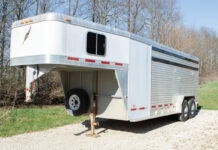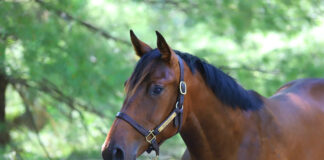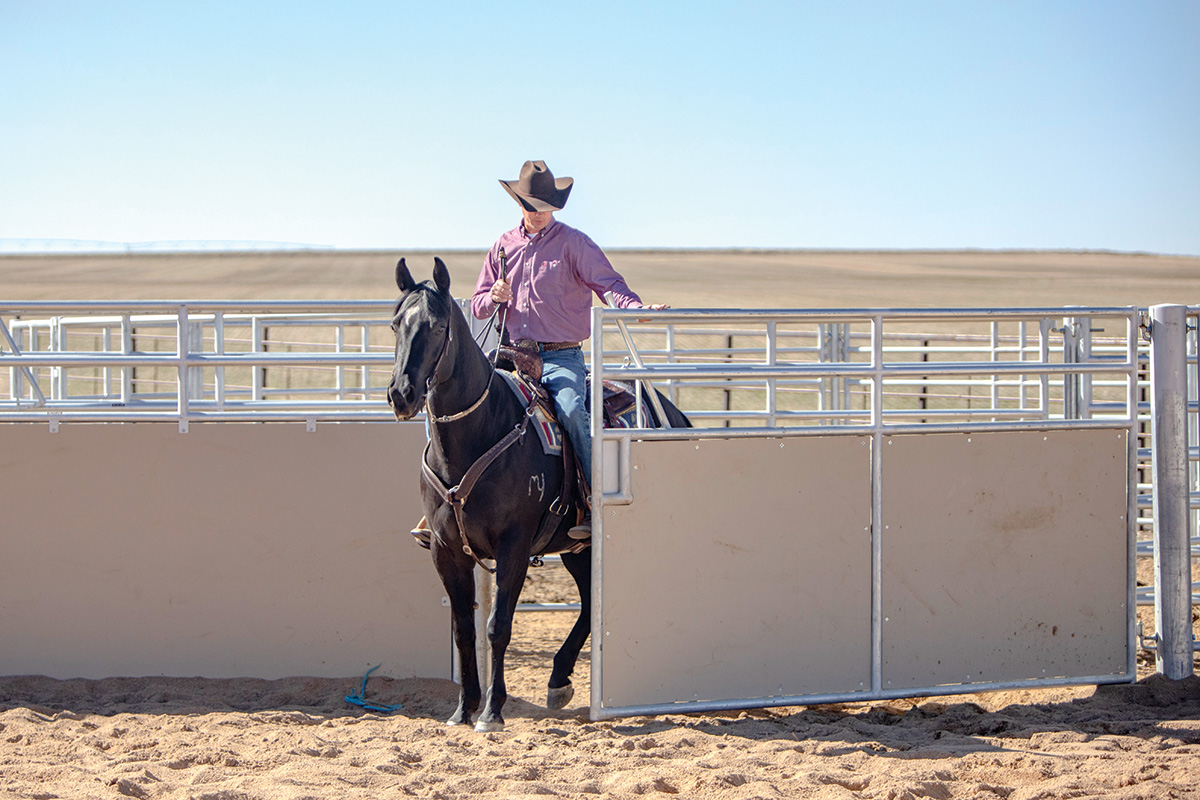
Working a gate from horseback is a necessary skill when riding on the ranch. When competing in ranch riding classes, the obstacle can be part of the competition or the entrance to the competition grounds. You’ll need to know the process so that your horse has the skills necessary to open and close a panel gate.
“There are no rope gate openings in ranch riding competitions now,” says Crow. “Instead, riders need to be ready to show that they can open and close a gate without leaning and while showing you have control of your horse to put him exactly where he needs to be at every part of the process.”
Ranch riding patterns will dictate if you are to open a gate with your right or left hand and if you are to push or pull. In some advanced patterns, you may even be asked to back through a gate. Read on to find out how to open a gate by pushing it away from you.
Ranch Riding Skills Needed Before Maneuvering a Gate
Before attempting to open a gate from the saddle, make sure that your horse can independently move his forehand and hindquarters. To work a gate, your horse needs to be able to move his shoulders and hips on command; he should be able to sidepass in each direction. While the sidepass isn’t always a move needed for gate opening, it’s good to know that you can move your horse into position as needed.
Warm up your horse as usual, then practice moving his shoulders by applying leg pressure in front of the cinch. Move his hindquarters by applying leg pressure slightly behind the cinch.
For each move, choose a direction to go, block forward motion with your reins, relax your leg and “open the door” to the direction you want to go while your opposite leg applies pressure.
To sidepass, you’ll block your horse’s forward motion with the reins, pick up and to the side, and apply leg pressure at the cinch line.
“Sometimes you’ll sidepass if you need to cover a mistake or move into position,” says Crow. “And depending on the gate, you may have to push it away from you and sidepass your horse a little bit. There’s always some lateral movement when opening a gate, and you’re not going to be penalized for sidepassing when needed.”
Crow says it’s important to know where the gate is placed in the ranch riding arena. He says you don’t want to sidepass to get to the gate if you could have easily ridden forward into alignment with the gate opening.
Approach and Through
When you’re ready to open the gate, ride up next to the gate opening so that the hand you’ll open the gate with is aligned with the gate’s handle.
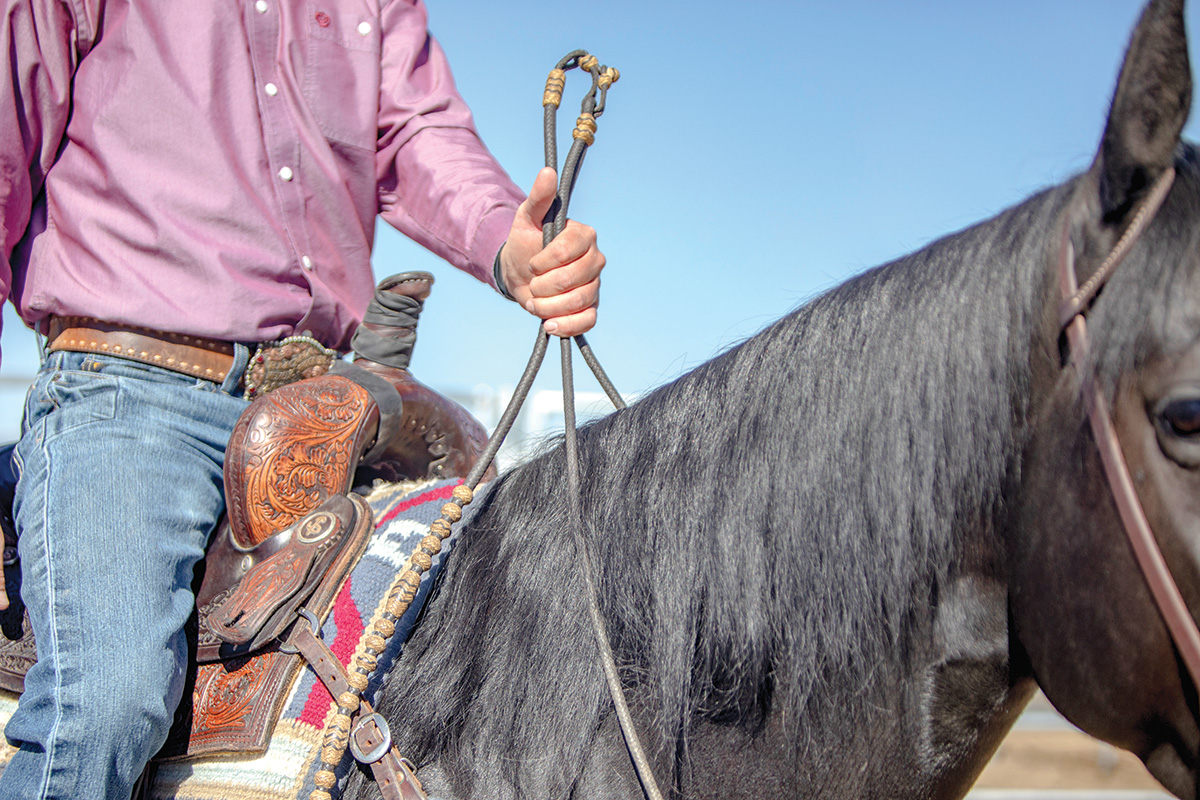
“You may have to trot up and stop in position to show that you have control of your horse,” says Crow. “Stop so that you can reach the handle of the gate without having to lean way over or back. Your horse should be parallel to the gate. Place your reins in the hand that won’t open the gate. I put the tail of the romel reins in the same hand as the reins so it’s clean and tidy when you’re working an obstacle.”

Crow says to place your hand on the gate handle to open it. Then, back up slightly to make sure that the horse’s head will clear the gate opening. Make sure to keep your hand on the gate as you back and ride through.
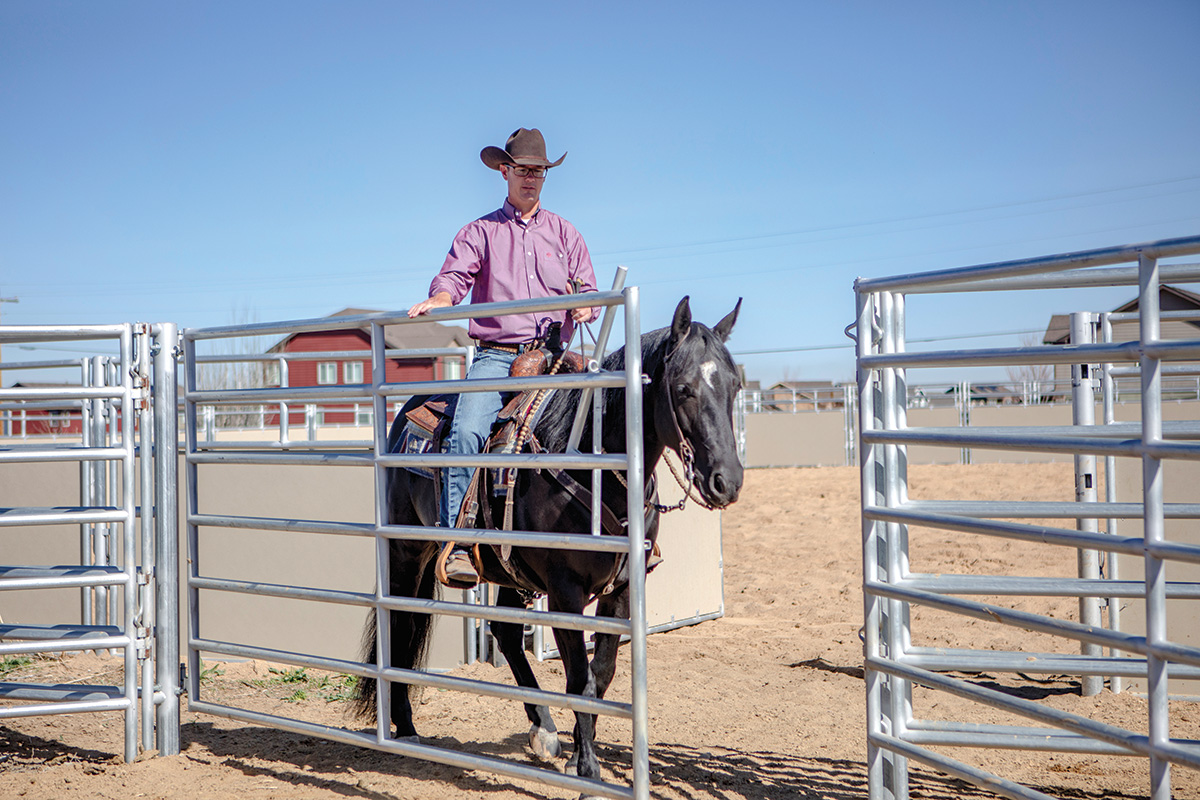
“I want the horse to back straight, then as I push the gate open, I want him to bring his forehand through and then bring his hindquarters around the gate,” says Crow. “To close, I’m going to sidepass perfectly straight as I shut the gate. Then I want to see that my horse’s shoulders are just in front of the latch, lining my hand up to latch the gate easily.”
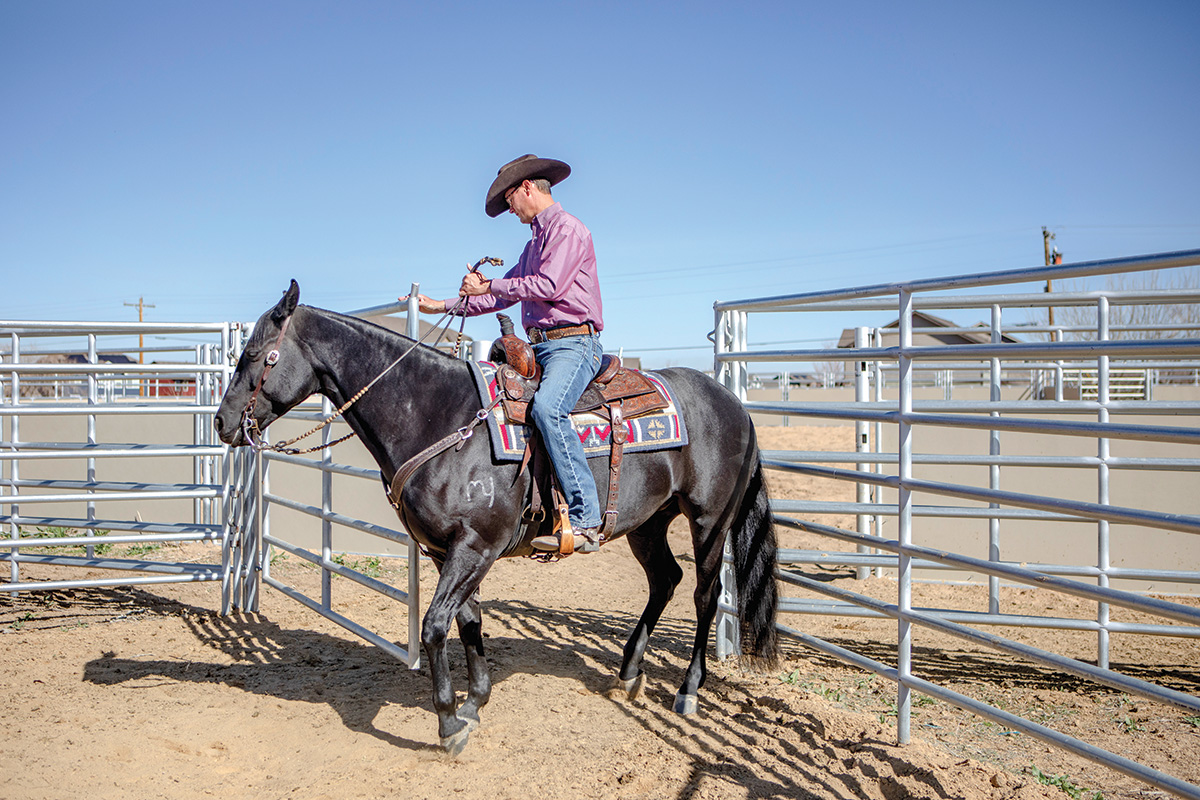
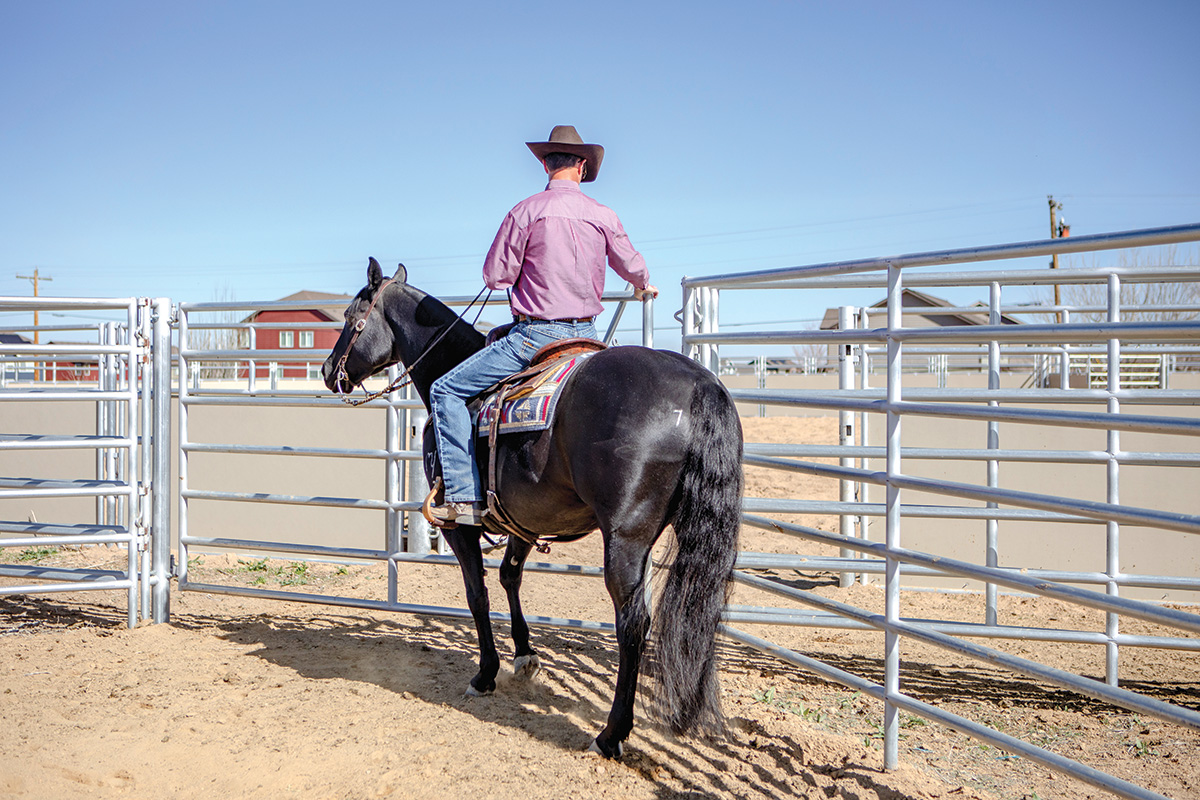
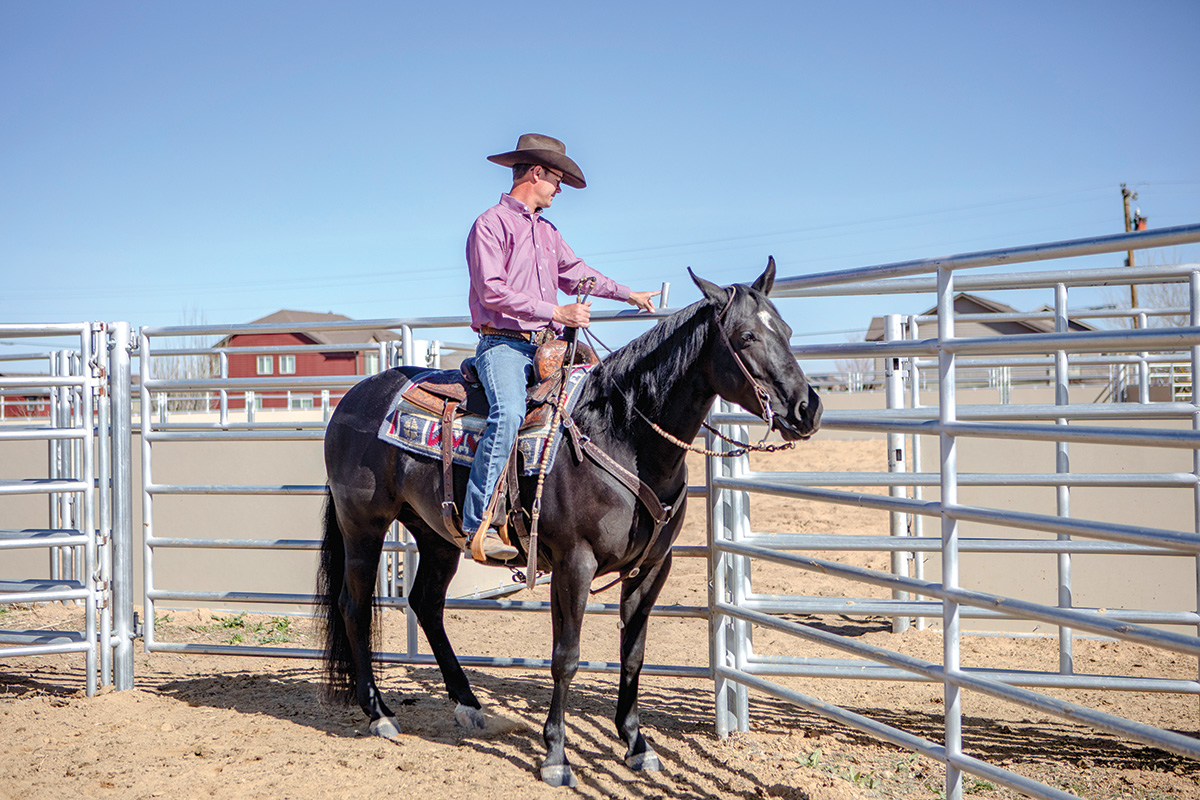
Slow Practice
When practicing at home before a competition, Crow says that he slows the process down and doesn’t open the gate quickly.
“I do it step by step, and I wait between every step to make sure that the horse is patient,” says Crow. “When a horse understands how to work a gate, he often starts anticipating and rushing through. I want to keep it all slow and have the horse work off my cues. I will ride up to the gate and stand still for 10 seconds before I reach for the handle. Then, I’ll wait 10 to 20 seconds in between each of the next steps.”
Crow says he waits even longer between steps if he’s working with a young horse.
“I make them pause and wait for me, especially with a younger horse,” he says. “Wait a little longer with a horse who has learned to rush, too.”
If a horse gets anxious at the gate opening and prances or jigs, Crow recommends backing the horse (gently) in a big circle and returning to the gate-opening spot.
“I will back him right up to the point where I wanted him to stand still, then give him the option to stand patiently or back a circle again,” he says. “This isn’t a punishment but provides the horse a choice of working harder or standing still comfortably. It doesn’t take very many circles before the horse chooses to just stand at the gate and be patient.”
Safety First
When you’re just starting to open and close gates with your horse, opt to push the gate open as Crow described.
“The ranch riding pattern may dictate how you have to work in a show, but it’s generally safer to push a gate than to pull one to you. When you pull a gate, then you’re having to go through it, and you run the risk of not having the gate open far enough and catching tack on the latch.”
As you start to practice, ride through gates designed with easy-to-use handles. In a competitive setting, you may have to reach down or use whatever handle is available.
If you are building your confidence or your horse is just learning, make sure that the handle is at your arm’s height, and you don’t have to practice too many new skills at once.
“I have seen shows where the gate has a traditional chain to reach for that is low,” says Crow. “It’s important that your horse feels comfortable with you reaching over and shifting your weight before you try to reach at a gate. Make sure your horse is used to the feel out in the open. When you do reach down, make sure to keep your weight as even as possible in your stirrups to keep your saddle from shifting and to keep your horse from moving away. I like to keep my leg off my horse as I lean so he doesn’t mistake my reaching for a cue.”
Meet the TrainerCody Crow owns and operates No Where But Up Performance Horses with his team of trainers in Johnstown, Colo. He trains horses and riders to compete in versatility ranch horse, ranch riding, ranch trail, and reined cow horse competitions. He has earned world and reserve world championships and helped his horses earn titles in American Quarter Horse Association, American Paint Horse Association, Appaloosa Horse Club, National Reined Cow Horse Association, and National Snaffle Bit Association events. |
This article about maneuvering gates for ranch riding appeared in the August 2023 issue of Horse Illustrated magazine. Click here to subscribe!


